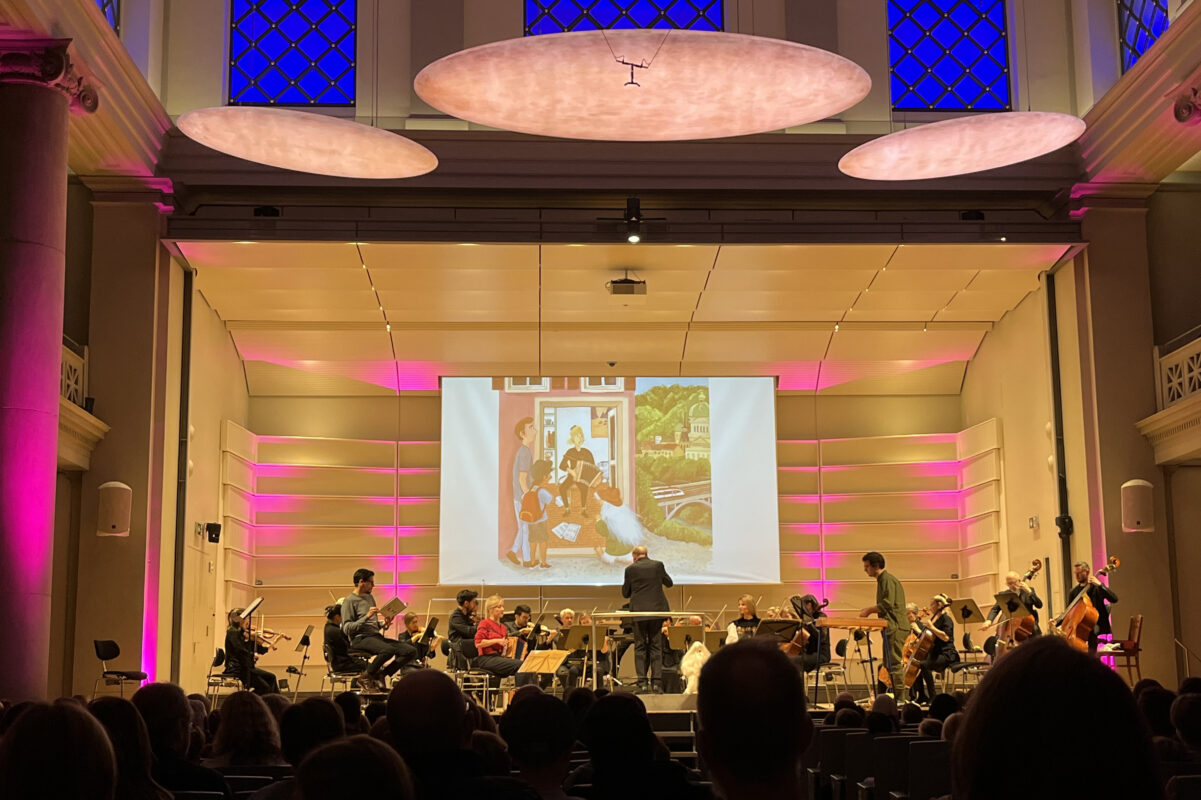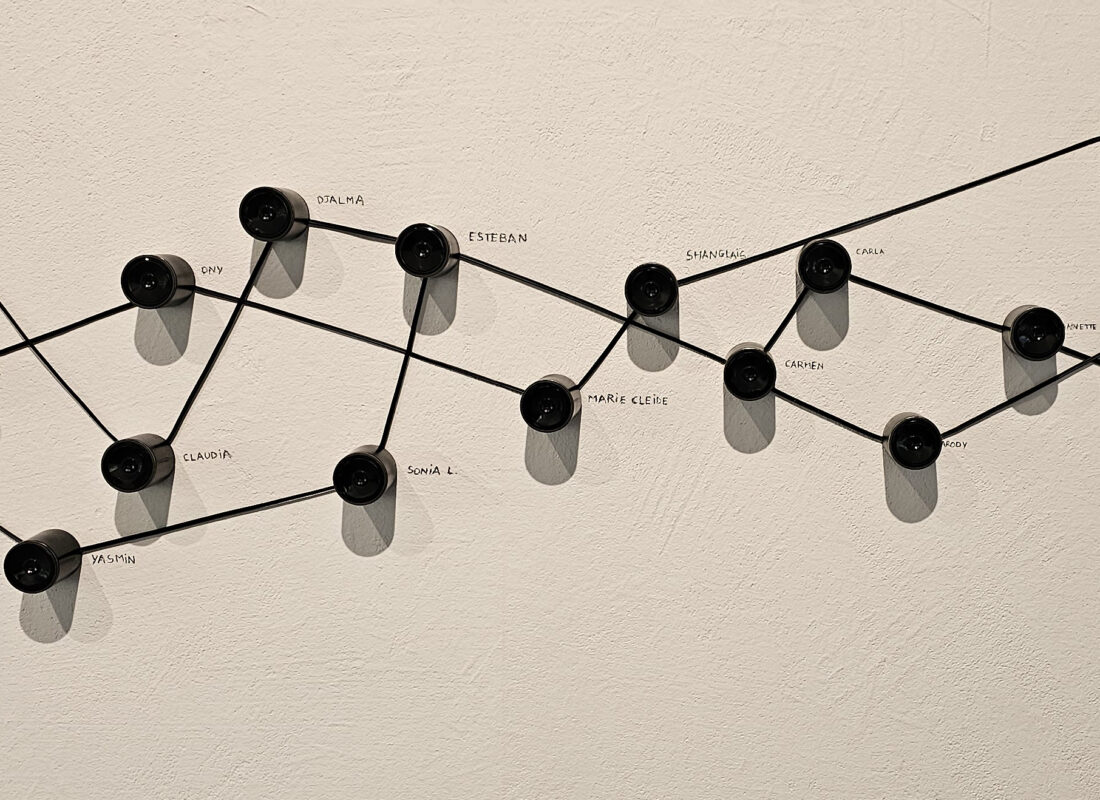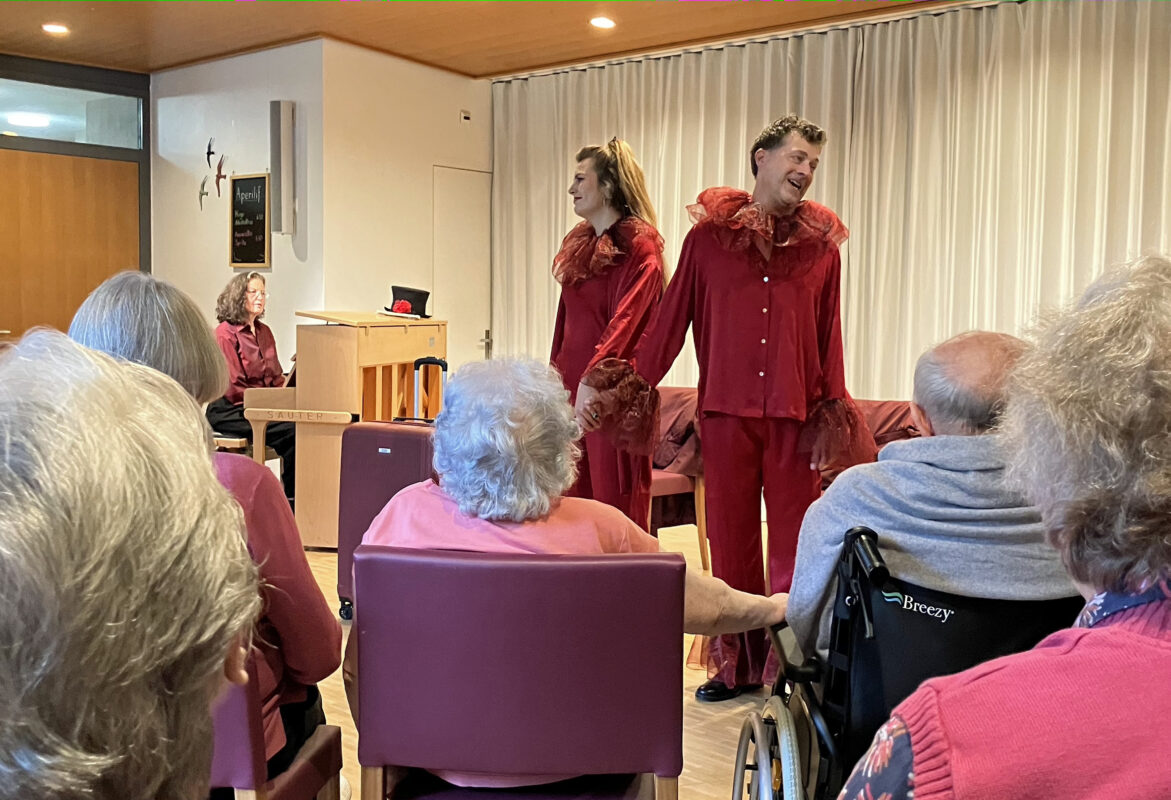The medieval Rabab
At the beginning of November, the Bern University of the Arts (HKB) hosted the international interdisciplinary conference "The medieval Rabab. A string instrument with an Arabic-Islamic past and present" took place at the Bern University of the Arts (HKB).
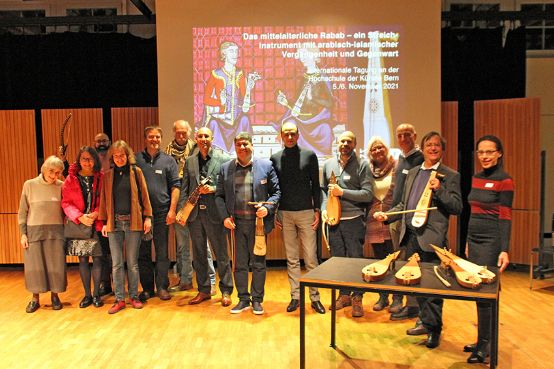
In line with the pandemic situation, a hybrid format was chosen. The on-site event was simultaneously broadcast online, three speakers were connected and discussion was possible among all participants, whether they were physically or virtually present.
The main title of the conference already specifically identifies its conceptual center: the rabab, an early string instrument played in medieval Europe until 1300, which is now largely lost to the European music tradition. Its reintegration into historical performance practice within early music is one of the main concerns of the interdisciplinary research project based at the HKB and supported by the Swiss National Science Foundation "Rabab & Rebec. Research into fur-covered string instruments of the late Middle Ages and early Renaissance and their reconstruction". The first project conference was able to contribute to this goal with a broad contextualization of the numerous textual, visual and ethnomusicological sources - not least by explicitly locating the string instrument in its Arabic-Islamic past and present, as stated in the conference's subtitle.
To this end, the speakers from various disciplines presented a broad spectrum of interconnected issues from often overlapping fields of research in a total of 15 lectures: historical musicology, ethnomusicology, music practice, music iconography, art history and linguistics. It ranged from the etymology of the term, the distribution channels and the functional context of the instrument as well as its practical playing and tonal characteristics to its pictorial representations in art and the current practice of the North African Andalusi-music.
Origins and reconstruction
The conference was opened by Thomas Gartmann (Bern), project manager and head of research at the HKB, who introduced project manager Thilo Hirsch (Bern) as the spiritus rector of the research project and the conference. After his introduction to the topic, one section was devoted to the Arabic-Islamic origins of the Rabab, which, in the absence of surviving original instruments, must be reconstructed from the basic textual sources. From the point of view of a musical translatio studiorum Anas Ghrab (Sousse) began by giving an overview of these textual sources and the mechanisms of such a transfer of knowledge across space and time. Salah Eddin Maraqa (Freiburg) impressively demonstrated that philological detective work is required where a term essentially shapes the conception of an instrument. He presented new findings on the etymology of the term on the basis of extensive critical source studies Rabābwhile Ioana Baalbaki (Târgu Mureș) is the position of the Rabāb within the music theory of the time on the basis of al-Fārābī's "Great Book of Music", the Kitāb al-Mūsīqā al-kabīr.
-
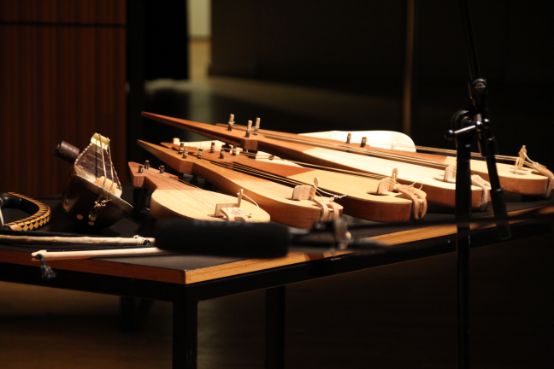
Photo: Daniel Allenbach/HKB
Al-Fārābī is also the one who created the Rabāb The monochord was first explicitly mentioned as a bowed stringed instrument in the 10th century, which is why Laura de Castellet (Barcelona) focused on the use of the string bow and its distribution channels alongside the characteristic vertical playing position in the section on textual and pictorial sources used for music practice and theory. Saskia Quené (Bern), on the other hand, located schematic representations of the monochord within music theory with an art-scientific approach as part of cosmological harmony theory, thus recalling that music, according to the medieval view, belonged to the quadrivium of the Artes liberales belonged to.
Methodologically oriented round-table discussions rounded off the varied program on both days by thematically following on from the last lecture. On the first day, this was a joint lecture by Thilo Hirsch (Bern) and Marina Haiduk (Bern), who presented the draft of a methodological-practical guideline for the reconstruction of lost musical instruments. Their proposal was designed as a critical counter-proposal to the common practice of unquestioningly adopting morphological features from pictorial representations. How this uncertain basis can be used for the purpose of practical instrument reconstruction was discussed controversially in the field of tension between music iconography, organology and art history, first in the three co-presentations by Antonio Baldassarre (Lucerne), Theresa Holler (Bern) and Karolina Zgraja (Zurich), and then in the subsequent round table. By its very nature, the negotiation process could not be conclusively clarified. However, the identification of problem areas and interdisciplinary dialog were identified as prerequisites for the development of fruitful perspectives, where the interpretative sovereignty of one's own discipline can be set aside in favour of a necessary exchange.
Occurrence and playing practice
The second day began with a lecture by project collaborator Marina Haiduk, who presented a selection of depictions of vertically held small stringed instruments from the 11th to 13th centuries and examined their geographical distribution and functional context, whereby their occurrence in a few subjects was conspicuous. Thilo Hirsch analyzed the Rabab depictions in the Cantigas de Santa MaríaThese manuscripts from the circle of Alfonso X provide information about the types of European rababs with fur covers that were widespread on the Iberian Peninsula in the 13th century. The rabab, reconstructed from one of Hirsch's miniatures, was presented to the public for the first time and questioned about its practical use in music.
The following two sections, chaired by Martin Kirnbauer (Basel) and Britta Sweers (Bern), were dedicated to the Rabāb as part of musical practice in contemporary North Africa and its recent past (Mohamed Khalifa, France, and Anis Klibi, Tunis). Amedeo Fera (Leuven) and Vincenzo Piazzetta (Lamezia Terme) presented the bowed Calabrian lyre and its Byzantine origins, focusing on the relationship between the instruments. The two subsequent lectures focused on plucked instruments with skin covers: Emin Soydaş (Çankırı) examined the Turkish Kopuzwhile Sylvain Roy (France) played the plucked instruments of the sarinda type to the Afghan Rubāb in relation to each other. The lecture by Ed Emery (London) served as a transition to these ethnomusicological questions, examining both the influence of the music of al-Andalus in the European tradition as well as presenting small string instruments as part of nomadic cultures that can be traced back to the traveling troubadours of the Middle Ages.
Finally, an intradisciplinary dialog between ethnomusicologist Britta Sweers (Bern) and Cristina Urchueguía (Bern), representative of historical musicology, focused on the responsibilities, similarities and differences between the two (sub)disciplines. The questions considered from various perspectives, e.g. on historicity and authenticity, were finally taken as an opportunity to round off the conference with a discussion extended to the plenary session. Finally, in an informal jam session, the Tunisian and Moroccan Rabābs as well as the reconstructions of European string instruments (Rabab and Lyra).
-
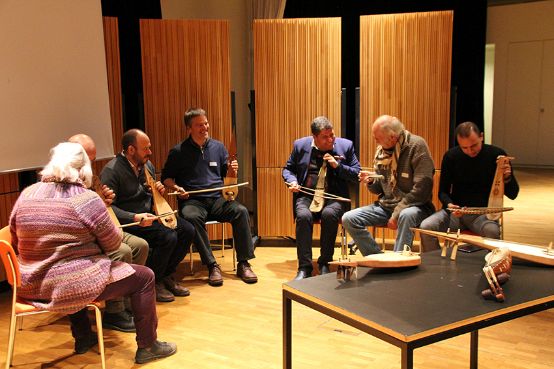
Photo: Daniel Allenbach/HKB
The conference contributions will be published in revised form in an anthology by Edition Argus. A second project conference is already being planned.






